Making purchases at Amazon.com and other website funds this website by generating revenue. Any help is appreciated and supports both me and content like this.
Falk Copper Saucier Review
When I first started shopping for Copper Pots and Pans, Falk had a special introduction pricing for their saucier. It seems there is always a try me introductory price for that pot. Given how versatile a saucier is, I would want all my customer to try it also. However, their saucier, has a major flaw. That flaw is a very sharp and abrupt corner. For a saucier, you want a nice gradual corner that lets you scrape the side without any interference. Whisking and emulsifying sauces becomes difficult when you need to be actively get into every corner. However, there is more to a saucier than making sauces. This review will discuss the design and features of Falk Copper Saucier. We will talk about how it function as a traditional saucier and as a pan.
Falk Copper Saucier Review Quick Summary
| Categories |  |
|---|---|
| Performance | Great |
| Colors | Brushed Copper |
| Brand Awareness | Europe and Copper Collector |
| Helper Handle | No |
| Pouring Lip | Yes |
| Thoughts | The copper construction makes it excellent at conducting heat. This lets you have better control over the temperature of the sauce as oppose to a cast iron pan. However, the major issue is the sharp corner. While it works great as a heat conductor, the tight corner makes it difficult to whisk. A gentle sloping corner like that of All Clads Saucier is better. |
| Reviewed Cookware | Falk Saucier |
Saucepan vs Saucier vs Chef Pan vs Windsor Pan
Often time people are confused about the different type of pans and shape. Their names vary but they also look very similar. This section will list the difference between these type of cookware and discuss what they are designed for.
Saucepan: A saucepan is a traditional pot with a straight wall. The diameter of the bottom and the top will be the same diameter. They are great for making soups and sauces. How manufacturer usually make these cookware is via a hydraulic press. All you need to do is stamp it out and affix a handle on it. It is a cheap and easy way to mass product these cookware.
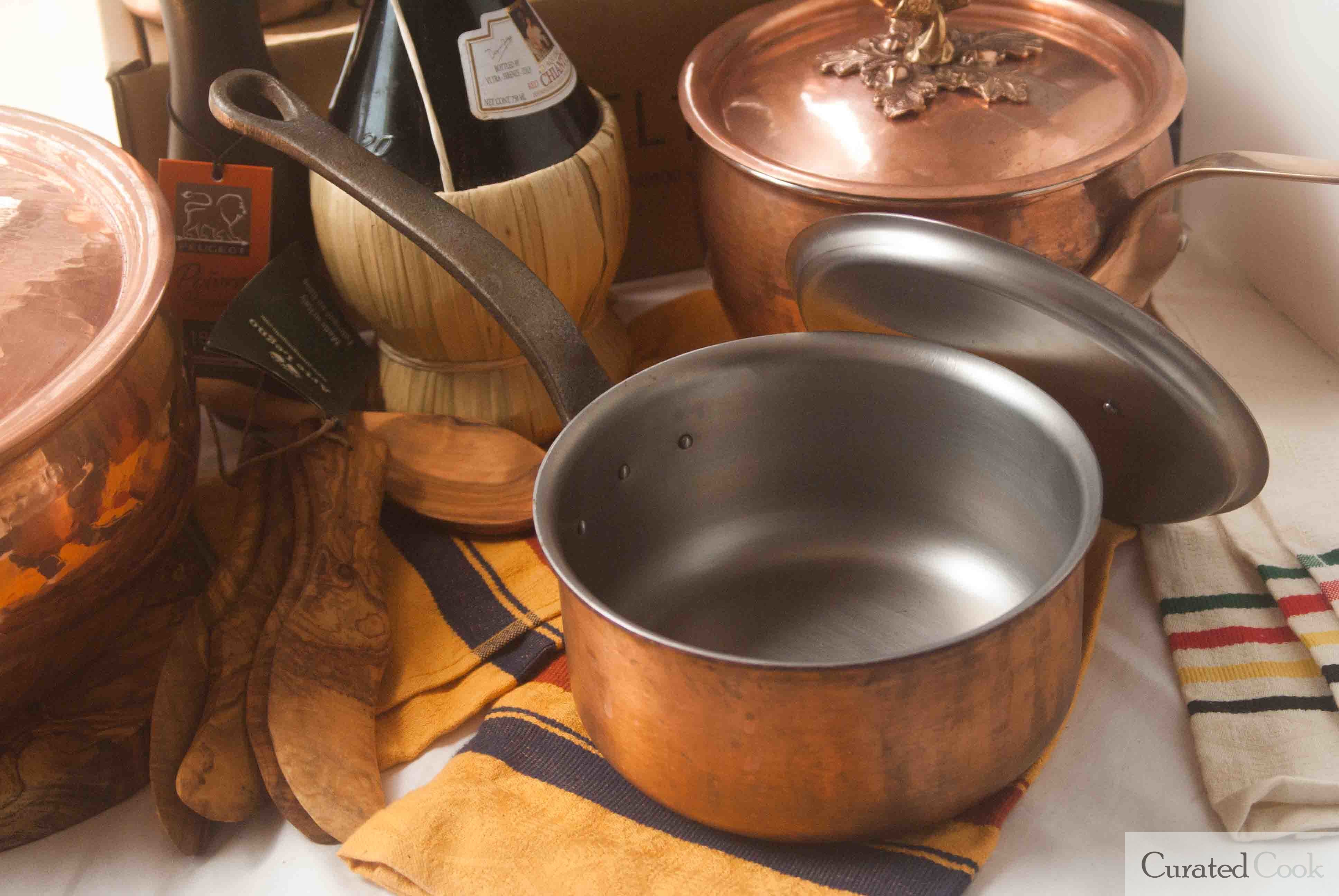
Saucier and Chef Pan: They both refer to the same pan. The bottom diameter of the pan is smaller than the rim diameter, usually around 2 inch or more. It curves upward to the rim with a slight belly to the side. This design increase the overall surface area and promotes evaporation of liquid. They are great if you intend to reduce sauces or stock.
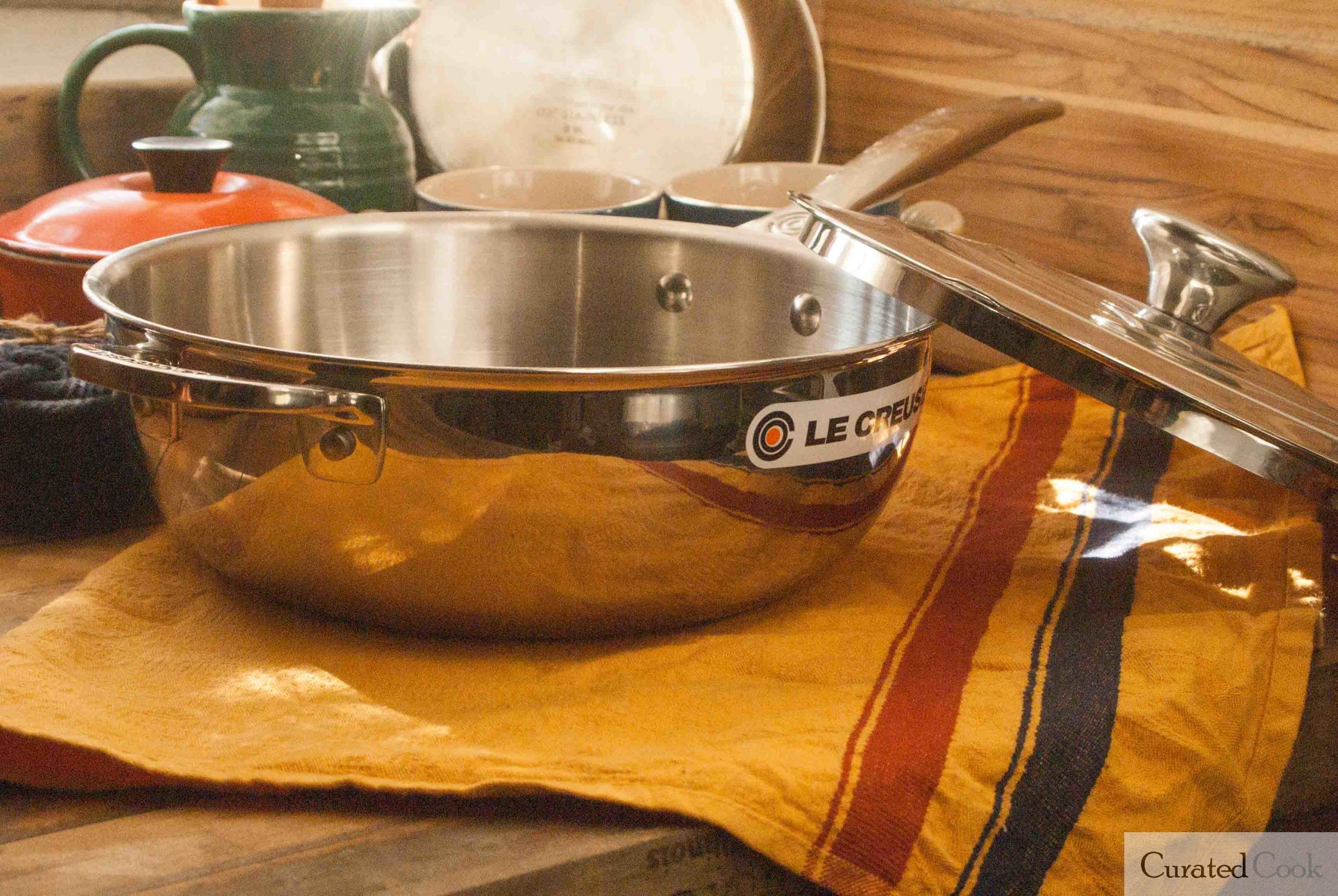
Windsor Pan:A Windsor pan (sometimes called Fait Tout) serves the same function as a Saucier. I suppose you can call it a predecessor to the saucier. The bottom diameter is smaller than the rim diameter. Agai,n often time by around 2 inch. Instead of having a belly, it is a straight angle. It promotes evaporation of liquid by using an increase surface area. Interesting enough, Falk use to manufacturer Windsor Pans, but I do not see it on their website anymore. I have two smaller pieces by them.
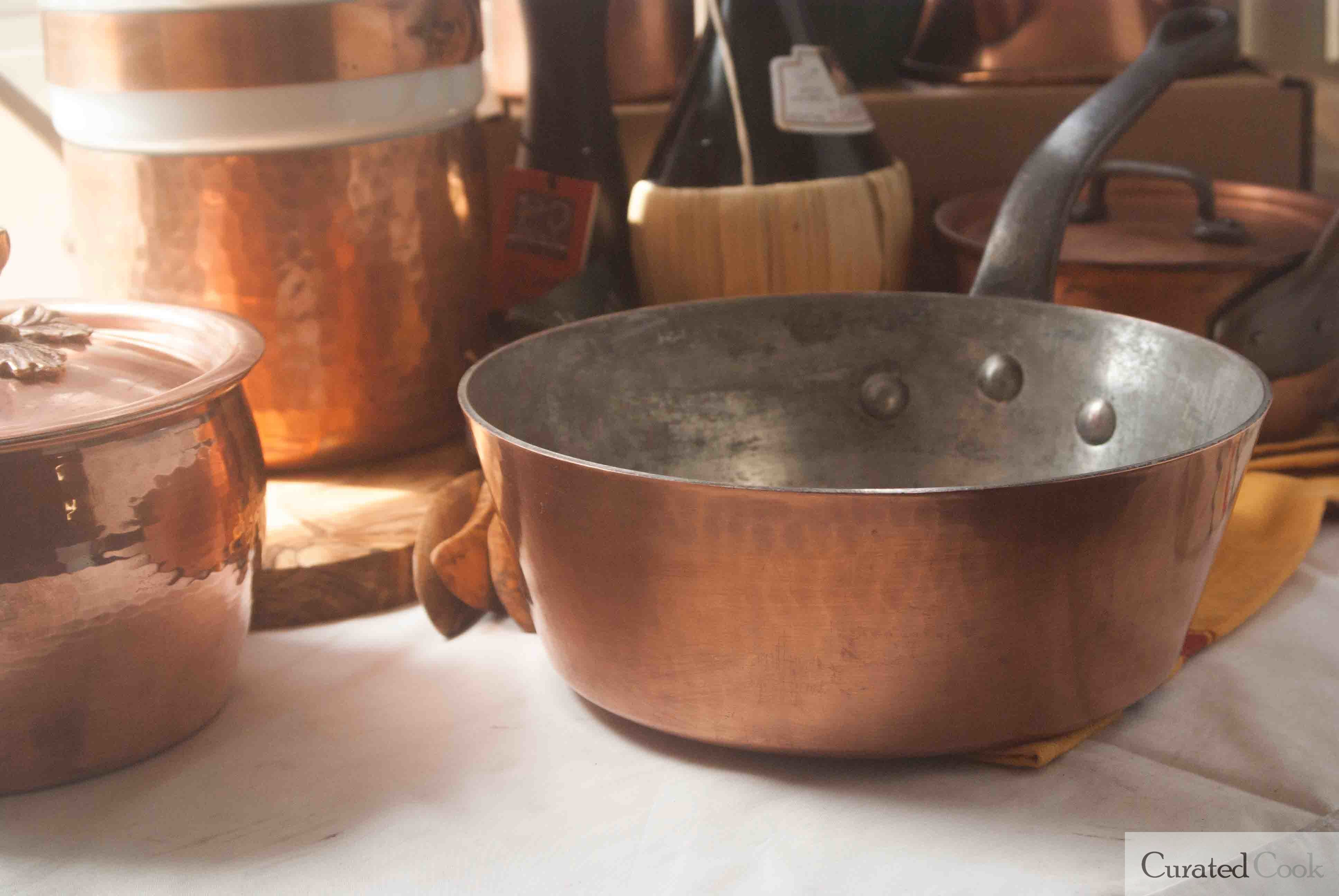
Falk Copper Saucier Design
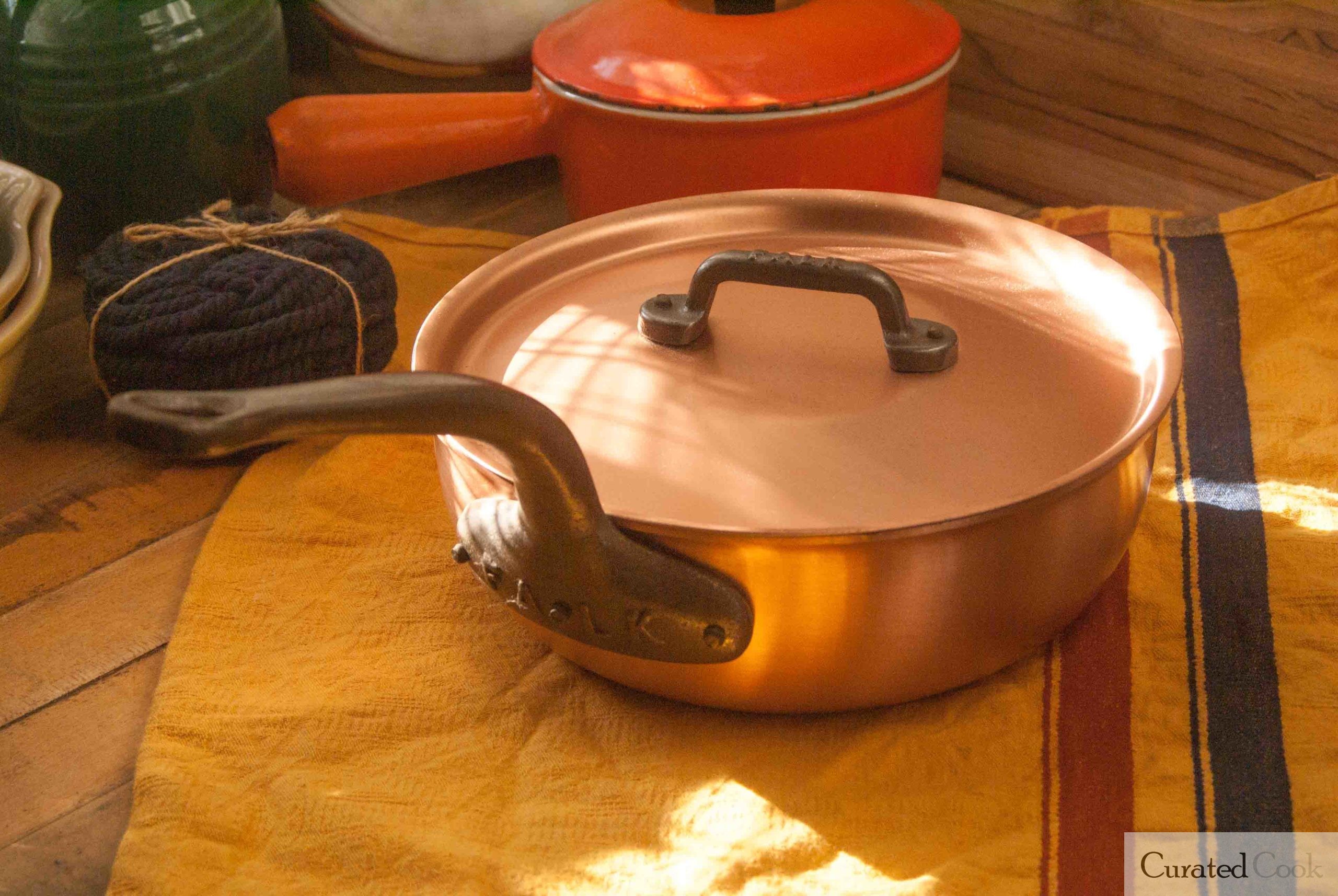
Falk Classic vs Signature Series
There are two type of handles that falk offers, the classic (Cast Iron) and the signature series (Stainless Steel). Which version you choose should depend on your personal preferences. I personally prefer the classic handle because I like the traditional look and feel. The cast iron handle is designed cleverly so that no material is wasted. The length of the handle just covers the width of my hand. This forces you to grip it near the base of the handle and improve overall control. The downside to a cast iron handle is that it can rust and it gets screaming hot. A glove is always recommended when cooking with the classic series.
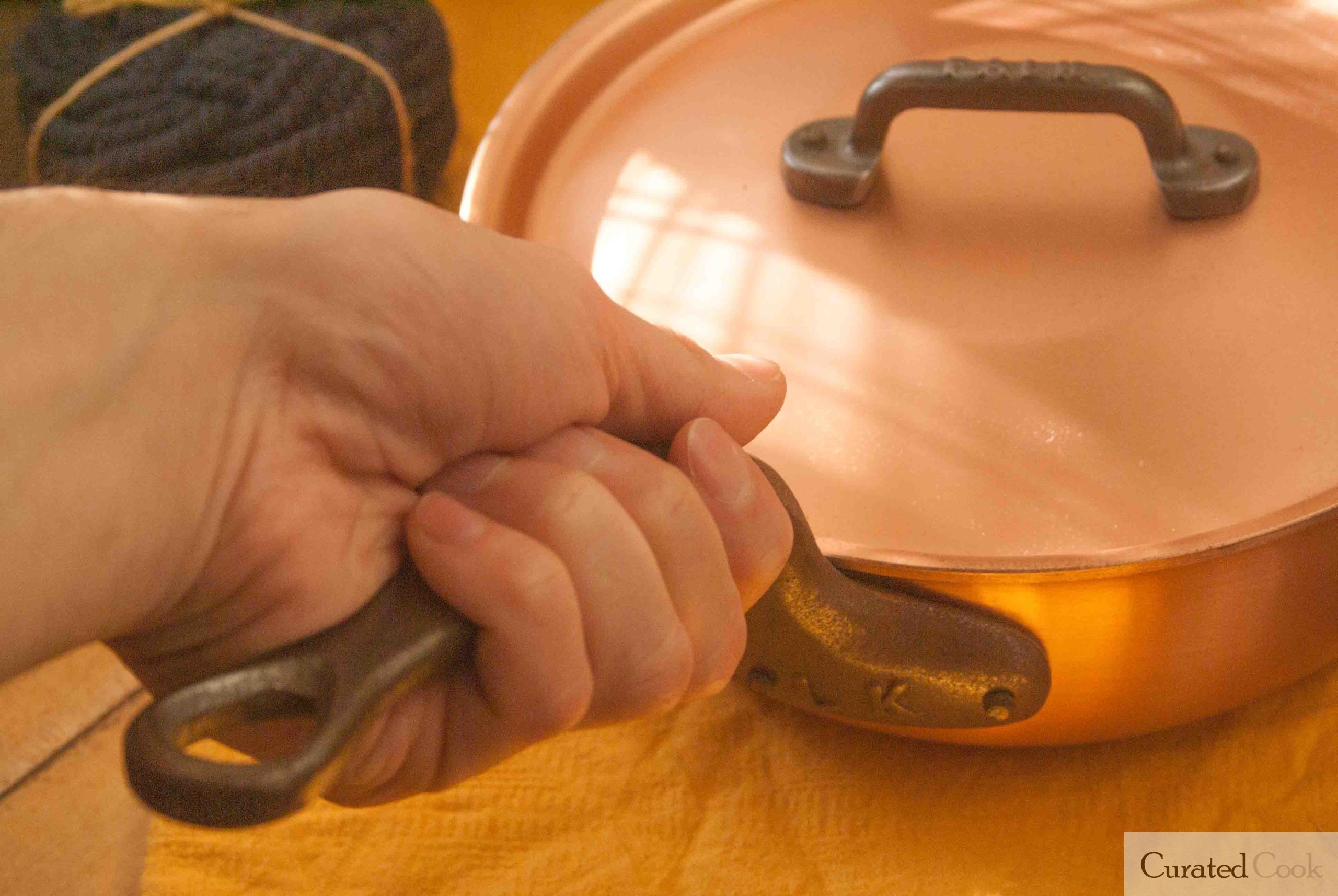
The signature series stainless steel design keeps cool on the stove top. However, it is not as comfortable as the classic series. In the center, there is a divot causing two raised ridges on either side. Those ridges causes discomfort and pain. This is very similar to how All Clad designed their handle, although not quite as masochistic.
Falk Culinair Saucier Shape
The shape of the saucier is the biggest problem. Most notably is the sharp corner on the inside. It seems like most of Falk Cookware has that sharp corner. For certain things like saute pan and sauce pot, it is fine. But for a saucier whose primary task is to make sauce, it is a bad choice. The sharp corner makes it hard to whisk sauces properly. If you do not actively target the corner, there can an excess of unincorporated sauce. Take a roux for example. If you manage to whik everything else but miss the corner, you will have lumpy roux. Granted, it will be minor, but why make it difficult? Falk is not the only one with this issue. If you look at Mauviel saucier, they have that same sharp corner.
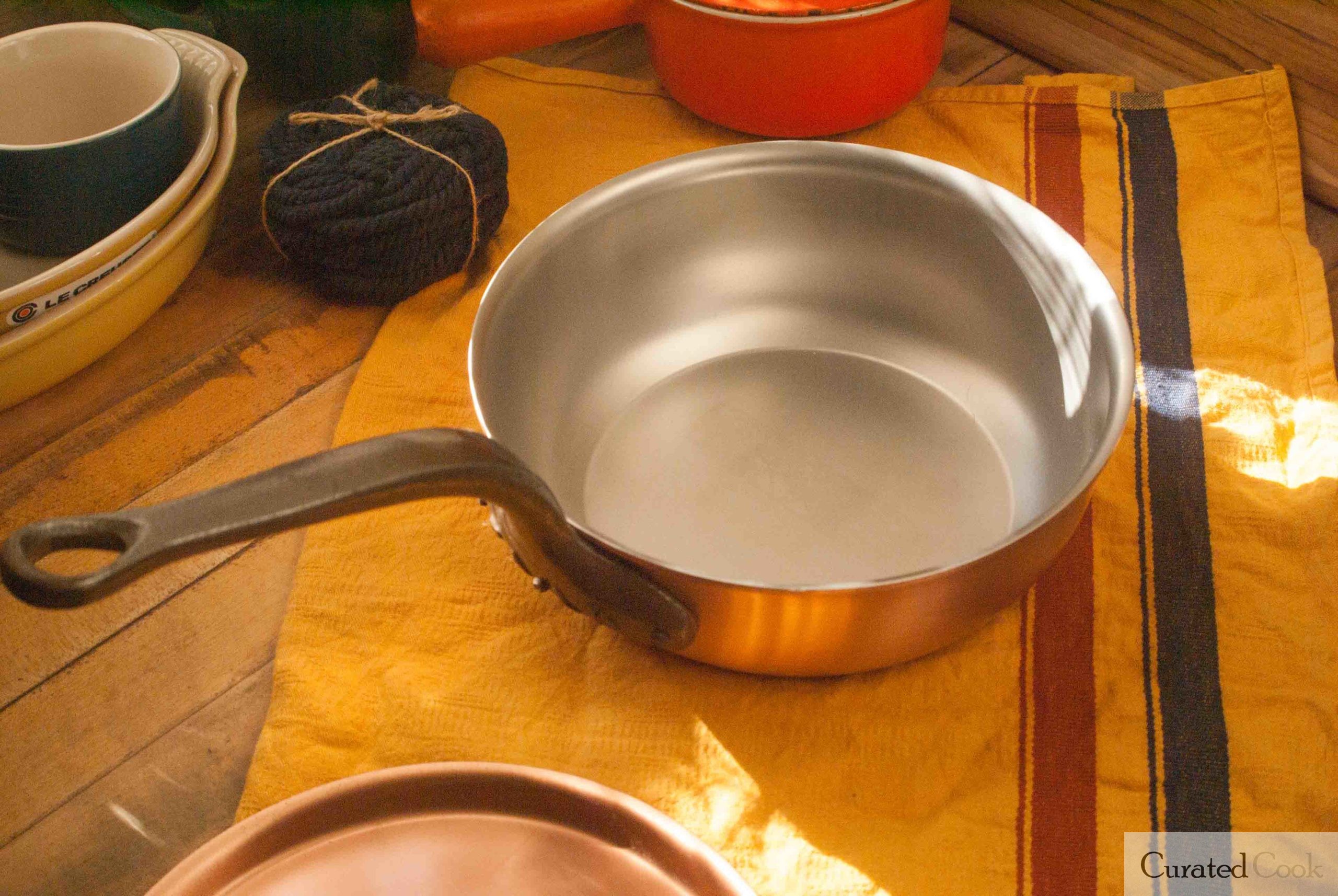
Le Creuset, Matfer Bourgeat and All Clad designed their saucier a little better. Their interior has a soft gradual edge that makes it easier to whisk. In my opinion, that is a defining feature of a good saucier. In fact, my article on the Best Saucier Pan list those saucier as some of the best in the industry.
Falk Copper Thickness
Falk, like most company advertise their cookware to have a thickness of 2.5 mm (2.3 copper and .2 stainless steel). What is good about them is that they actually provide what they advertised. A lot of other copper cookware manufacturer will say that their cookware thickness is 2.5 mm. However, this is not really consistent across the board. They will often time make their smaller pots thinner than advertised. Granted, the thickness could have been measured before it was stamped out. The stretching process might have made it thinner. I would have preferred that they measured it after they stamp it out.
To be fair, I have older versions of Falk Cookware, those are a little thinner than 2.5 on the sidewall. I am guessing that sometime down the line, they must have changed their manufacturer process. To get an idea on how their cookware is made, check out their video.
If you want to see which version of cookware you have, look at the handle. The newer model, have the word Falk engraved onto it. Those are usually thicker. Those older version only have their logo stamped onto the base of the pan.
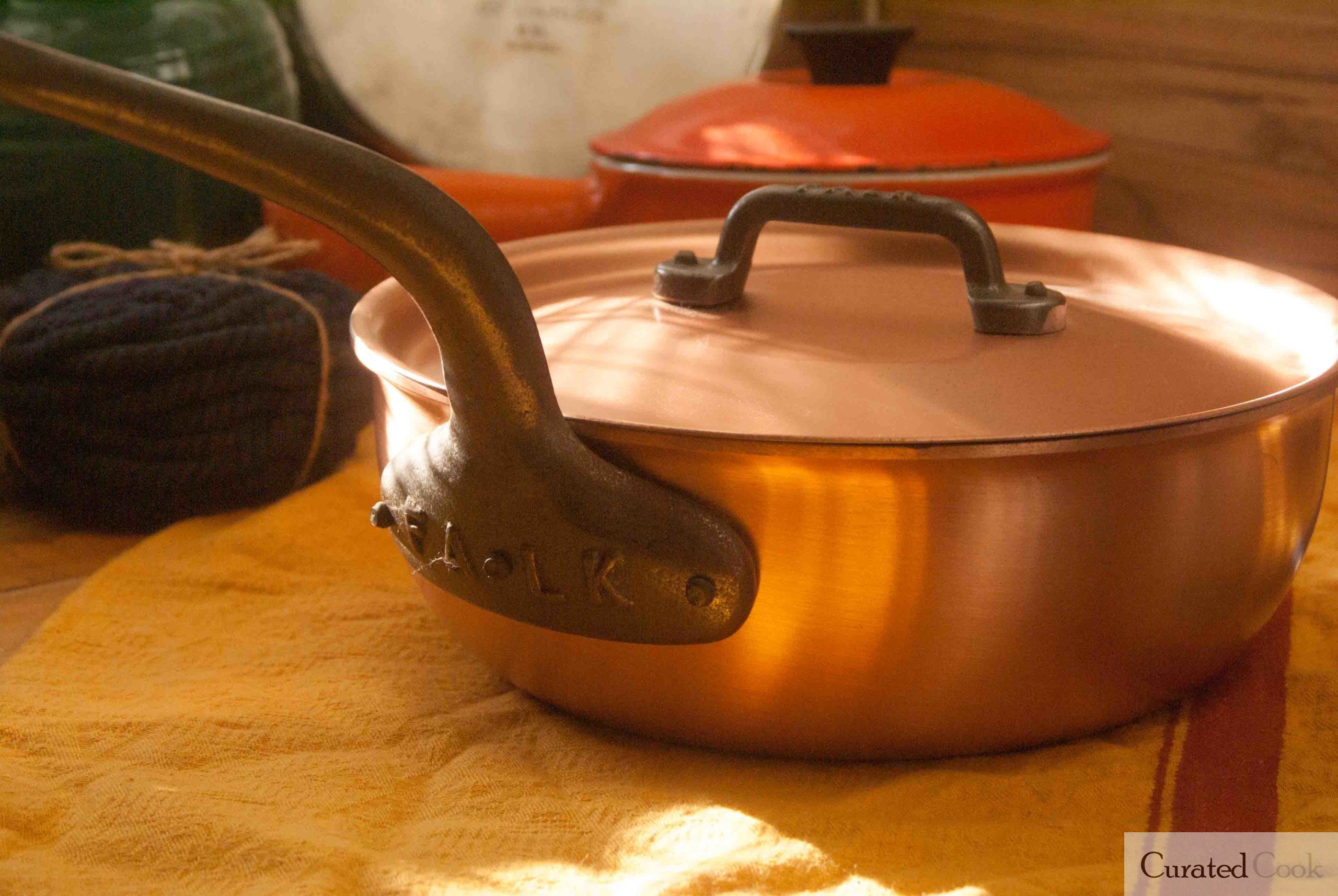
Falk Culinair Brushed Copper Finish
Falk is one of the first manufacturer to brush their cookware. Other manufacturer will just polish it to a mirror shine. While it does look good, the issue with this is that over time, you will loose the mirror finish. There is no way to bring that back unless you use a rotary buffer. If you are determiend, you might be able to bring it back with a lot of elbow grease. But for practicality sake, having a brushed exterior fixes a lot of that issue. It also hides a lot of nicks and cuts.
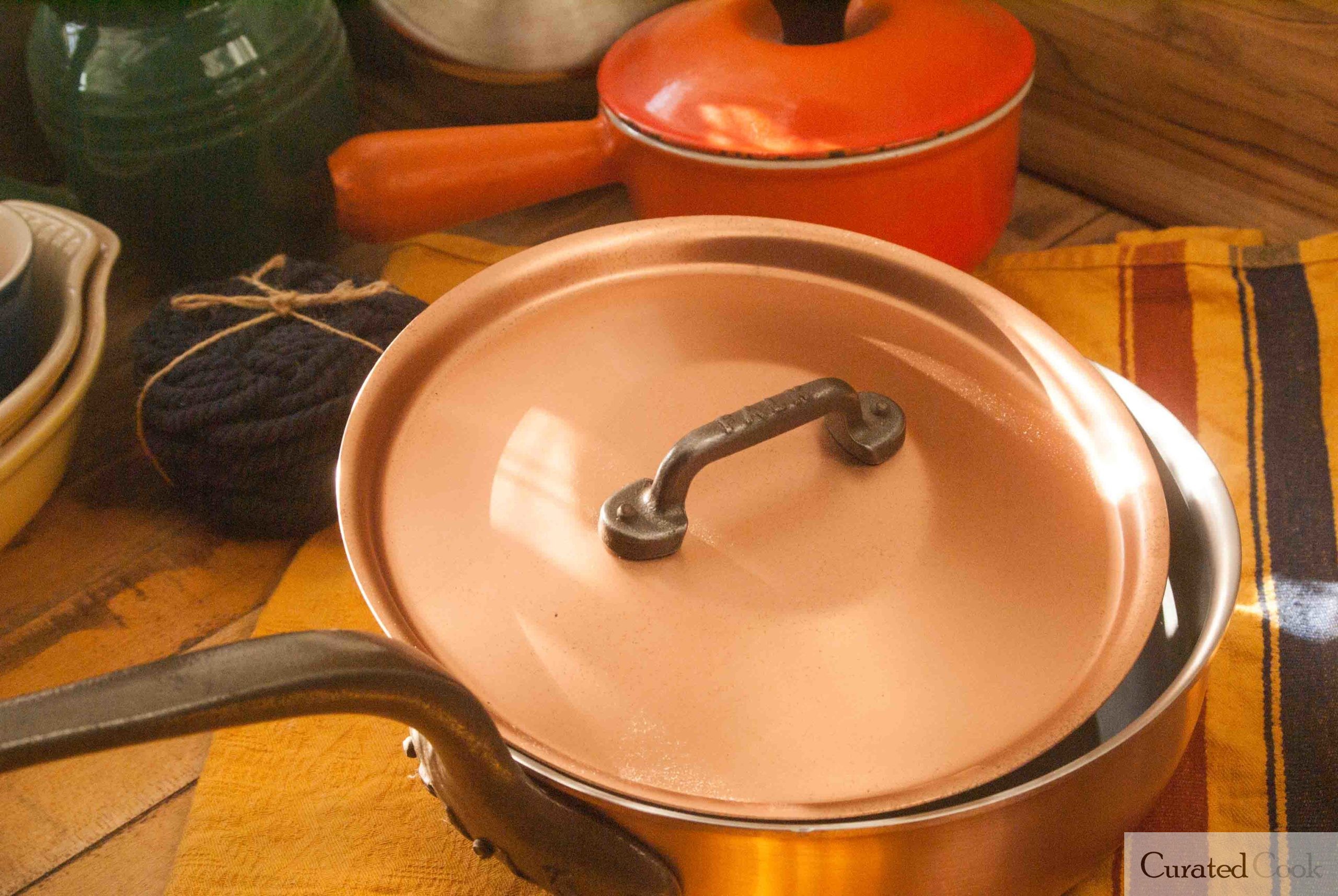
Mauviel actually started their own line of cookware with the brushed finish. Initiation is best form of flattery right?
Fit and Finish
Fit and Finish on Falk Saucier is excellent. Everything is executed perfectly and I do not see any flaws anywhere.
Specs
Note:These measurement are done by me with the tools that I have on hand. The manufacturers have their own measurement guidelines and that should be assumed to be accurate. What I find on this review can vary widely due to several factors, such as ambient temperature, location, water, tool calibration, stove btu, etc..and should only be considered as my opinion.
Weight:1830 g Lid Weight:394 g
Rim Width:Around 8.25 inch
Base Cooking Width:Around 5.5 inch
Height: Around 2.9 inch
Thickness: 2.5 mm
Falk Copper Saucier Conclusion
Everything on this saucier is done right except for the shape. Which is unfortunately the most important part. If you manage to find this on sale, it might be worth buying. But if there is no deal and you want a copper saucier, getting Matfer Bourgeat Saucier might be better choice. The interior gradient is curved and lets you whisk a lot easier than falk’s saucier.
I hope you found this Falk Culinair Copper Saucier Review to be informative, If you would like to see more, please visit thePots and Pans Review page.
